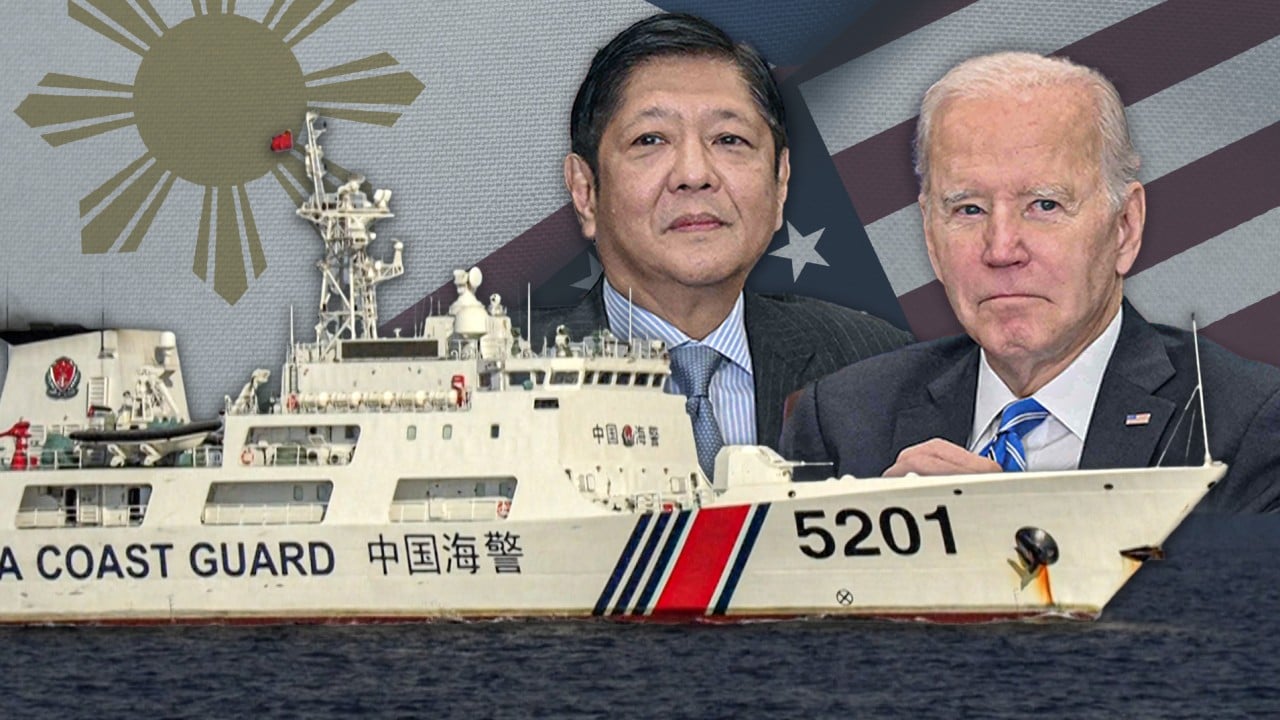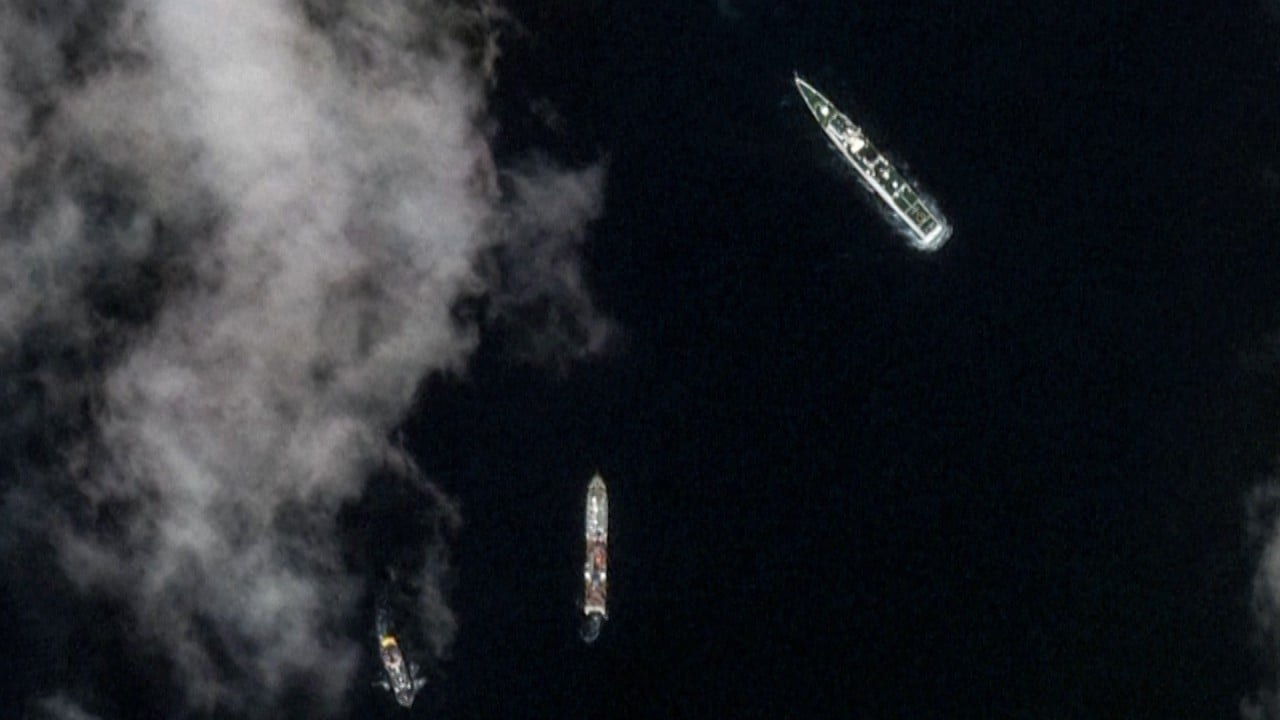Next week’s massive Philippine-US naval drills to be held in the midst of flaring tensions in the South China Sea will put both Beijing’s self-proclaimed restraint and the fragile US-China detente to the test, observers said.
In a show of force aimed at China, the three-week Balikatan “shoulder to shoulder” exercise gets under way on Monday and will be the biggest held between the two countries since its launch in 1991.
The exercise is meant to underscore Washington’s commitment to its regional allies and its deepening involvement in the maritime dispute.
But the drills and Manila’s continued pivot towards Washington could also reinforce Beijing’s view that Manila is increasingly relying on external interference to internationalise the maritime dispute and counter China, according to pundits.
This year the annual exercise will for the first time be conducted beyond the 12 nautical mile territorial waters of the Philippines, including in areas facing Taiwan and the disputed waters in the South China Sea, both potential flashpoints between Beijing and Washington.
In another first, Philippine Coast Guard staff will also be among the 17,000 or so troops taking part. Most of the personnel will be from the Philippines and the US, with contributions from Australia and France.
The Chinese foreign ministry said on Wednesday that the drills were designed to “flex muscles and stoke confrontation”, with spokesman Lin Jian warning of rising tensions and instability.
“To hand over one’s security to forces outside the region will only lead to greater insecurity and turn oneself into someone else’s chess piece,” he said, adding that China would take “necessary measures” without elaboration.
China’s top diplomat and foreign minister, Wang Yi, also weighed in on Thursday during a charm offensive tour of Southeast Asia, calling on countries in the region to work with Beijing to oppose external meddling.
Philippine coastguard to join US drills for first time as China tensions swirl
Philippine coastguard to join US drills for first time as China tensions swirl
“We must be on high alert about the cobbling together of various ‘small circles’ in the region, oppose any attempts to create bloc rivalry and confrontation, and cherish and safeguard the hard-won peace and stability in the region,” he said after meeting his Indonesian counterpart Retno Marsudi in Jakarta.
Gregory Poling, a senior fellow and director of the Southeast Asia programme at the Centre for Strategic and International Studies in Washington, said this year’s drills, which involved many “firsts”, was “a continuation of trends, not a radical departure”.
“[It] continued the evolution toward larger, more multilateral, and more sophisticated drills which we’ve seen for several years … which could have been interpreted as training for contingencies involving China,” he said.
Lucio Blanco Pitlo III, a research fellow at the Manila-based Asia-Pacific Pathways to Progress Foundation think tank, said the location of the drills reflected the importance the Philippines attached to its sovereignty claims and how allies and partners played a part in the evolving approach.
“Manila is leveraging its alliance and security partnerships to upgrade its maritime capacity and deter further Chinese incursions in its waters. It shows a willingness to bear some risk to demonstrate its resolve in defending its maritime interests,” he said.
The Philippine Coast Guard’s debut was recognition of the challenge posed by Beijing’s “grey-zone” activities, following several minor collisions and incidents involving China’s use of water cannons, according to Pitlo.
While the drills could improve coordination between the Philippine military and its allies, Manila’s hardening approach towards China could “fit into Beijing’s view that Manila is militarising the issue and thereby pounce on it to escalate its reply”.
He expressed concerns about the risk of mishaps and conflict if Beijing chose to respond militarily.
“Knowing Beijing’s scorn for internationalising the dispute and the intervention of non-parties in the spat, Manila risks further drawing its big neighbour’s ire,” he said.
US missile deployment could push China to further militarise South China Sea
US missile deployment could push China to further militarise South China Sea
“China will respond to these allied drills, and the proliferation of vessels and aircraft in that contested maritime and airspace increases the risk of mishaps.”
Beijing has dialled up its criticism of Philippine President Ferdinand Marcos Jnr and his pro-US stance and stepped up military preparations for a possible conflict, including staging live-fire drills near the disputed waters ahead of the Balikatan exercise.
Yun Sun, co-director of the East Asia programme and director of the China programme at the Washington-based Stimson Centre, said the Balikatan drills were obviously “a deterrence message” to Beijing.
“More and more countries are supporting the Philippines’ position, regardless of China’s opposition,” she said.
“The optics of the giant Chinese Coast Guard ships using water cannon on the small [Philippine] ship are simply horrendous. The sympathy is on Manila’s side.”

But Shi Yinhong, a professor of international affairs at Beijing’s Renmin University, said China was unlikely to escalate its response to the joint US-Philippine drills, given the need to stabilise ties with the US.
He said a dramatic escalation of tensions “seems unlikely in the short term”, given China’s rather moderate response following the first summit between the US, Japan and the Philippines in Washington last week.
At the gathering, US President Joe Bien vowed to defend the Philippines from any attacks in the South China Sea, which he said would invoke their long-standing mutual defence treaty.
“China does not appear to be interested in engaging in symmetrical countermeasures, as it tends to focus on ‘strengthening itself and planning for the long term’,” Shi said.
Why do Philippine communist rebels keep rejecting Marcos Jnr’s amnesty offers?
Why do Philippine communist rebels keep rejecting Marcos Jnr’s amnesty offers?
Despite the risk of mishaps leading to conflict, Tan See Seng, a research adviser at the S. Rajaratnam School of International Studies in Singapore, also said a war with the US in the South China Sea would not make sense for either Beijing or Washington.
He described the drills as “an expression of Washington’s commitment to an ally” and a response to “China’s persistent show of force and aggressive conduct in that area”.
“But whether that commitment implies the US is ready to go to war against China in the South China Sea – or in the Taiwan Strait for that matter – is, however, unclear,” he said.
According to Tan, China would likely respond by stepping up military patrols in the disputed waters and staging military drills, all the while dialling up its rhetoric towards Manila and Washington.
“But whether this behaviour signals China’s readiness to take things beyond its usual level of grey-zone activities – designed largely to aggravate but not necessarily to start a war – is uncertain,” he said.
“Both Washington and Beijing are no doubt aware of this and are likely taking the necessary precautions to ensure that doesn’t happen.”
He said that while Biden needed to show to voters that he was an international leader whom the world could trust, China’s President Xi Jinping was also in a tough spot to “substantiate all his tough talk over Taiwan and the South China Sea”.
“By the same token, both Biden and Xi also value detente as a way to cool rising US-China tensions. It’s the balancing of these opposites and keeping the regional peace that will test the mettle of both these leaders,” he said.




